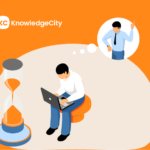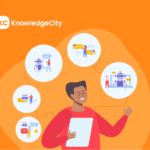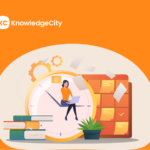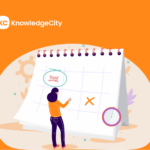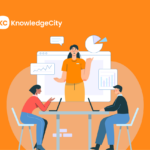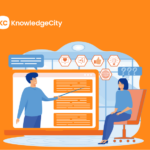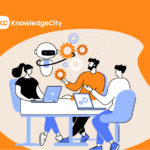A new hire walks in on their first day, full of questions they don’t know how to ask. They’re eager to get started but unsure what matters most. Every moment of silence, every delay in access, every generic form they receive dulls that initial excitement. And when the welcome doesn’t match the promise made during recruitment, people start looking elsewhere, quietly, even before their training ends.
For HR and L&D leaders, onboarding is one of the most critical moments to shape commitment and confidence. However, in many organizations, this phase still relies on outdated systems, inconsistent delivery, and overworked teams. With the right use of AI, onboarding can become seamless, personalized, and responsive, without losing the human touch that matters most.
In this blog, we’ll explore why onboarding must evolve, how AI supports each phase of the journey, and how your HR team can implement it with confidence.
Why Onboarding Must Evolve
Effective onboarding lays the foundation for trust, performance, and retention.
When onboarding is thoughtfully designed and delivered, it leads to:
But to consistently deliver this experience at scale, across hybrid teams, shifting business priorities, and tighter timelines, traditional methods fall short. AI offers a way to manage this complexity while allowing HR professionals to stay focused on people.
What AI Brings to Onboarding Today
AI enhances onboarding by organizing and delivering the right experiences at the right moments. It doesn’t replace HR; in fact, it supports HR by doing the things that technology can handle more accurately, more quickly, and more consistently.
Here’s how modern tools are being used:
These shifts save time, prevent errors, and keep every step moving forward without extra effort from the employee or HR team.
Rebuilding the Onboarding Flow With AI
Designing an onboarding experience with AI means breaking it into stages, then identifying what each stage needs most.
1. Before Day One
A clear and timely preboarding experience sets the tone. Using automation and AI tools, HR teams can:
- Send digital documents for completion with guided instructions
- Trigger IT setup tasks as soon as an offer is accepted
- Share welcome materials customized to the person’s role and location
- Schedule orientation and team introductions through synced calendars
This stage removes friction, ensuring that the first day isn’t spent waiting for access or chasing paperwork.
2. First-Week Guidance
New hires need fast answers and simple directions. AI-powered chatbots and checklists help them:
- Understand what’s expected in their first 5–10 days
- Access policy information without searching through handbooks
- Ask practical questions and get instant answers (e.g., “How do I submit expenses?”)
- Receive task nudges based on progress or inactivity
This level of support reduces confusion and builds confidence from the start.
3. Personalized Learning
People absorb information differently, and not all roles require the same content. AI helps shape:
- Learning sequences tailored to job functions
- Recommendations based on a hire’s previous experience or assessment results
- Adjustments in pacing based on how the person engages with the training
- Manager alerts when someone is falling behind or disengaged
This turns learning into a meaningful experience, not just a regular exercise.
With KnowledgeCity’s AI-powered Training Needs Analysis (TNA), HR teams can go one step further by identifying exact skill gaps for each role and aligning onboarding content accordingly. Instead of guessing what a new hire might need, you gain immediate clarity on their current capabilities and areas for development. This ensures that every learning path is not only personalized but also highly relevant and goal-driven from day one.
4. Ongoing Insight
Instead of waiting for feedback at the end of onboarding, real-time data shows what’s working. HR teams can:
- View dashboards with completion stats, training scores, and engagement trends
- Spot issues early, like a new hire who hasn’t logged into training or missed a key meeting
- Compare onboarding timelines across departments or locations
- Use insights to refine onboarding over time
These insights shift onboarding from reactive to proactive, improving experience and performance together.
Challenges in AI Onboarding and How to Overcome Them
Every improvement comes with trade-offs and obstacles. HR leaders using AI in onboarding should be ready for these specific challenges. Such as:
1. Integration Complexity
Many organizations already use multiple systems, HRIS, ATS, LMS, and email platforms. Adding new AI tools without integration causes more friction. To avoid this:
- Map out your current systems and identify points of overlap
- Choose platforms that offer native integrations or open APIs
- Involve IT early to plan stable workflows
Starting small, for example, automating form completion before expanding into learning, keeps complexity manageable.
This is where platform choice matters. A solution like KnowledgeCity’s AI-powered LMS is built to reduce this complexity. Our platform syncs effortlessly with HR systems like HRISs and ERPs, connecting training progress with performance evaluations and key performance indicators. By automatically syncing user profile data, it removes the need for manual updates, keeping your team’s information accurate and always up to date.
2. Team Readiness
Even the best-designed system fails without internal support. Before rollout, prepare your teams by:
- Training HR and managers on how to use the tools
- Defining what AI handles and what requires human action
- Creating fallback paths for questions or issues the system can’t resolve
Clear communication reduces resistance and helps everyone understand their role in the new process.
3. Data Protection
Onboarding requires personal and sensitive information. AI systems must meet legal and ethical standards for:
- Data encryption and secure storage
- Consent-based collection and processing
- Transparency around how data is used
In the U.S., recent state laws now govern the automated processing of employee information. Always work with legal teams to ensure compliance and audit vendor policies thoroughly.
4. Maintaining the Human Connection
While automation handles many tasks well, onboarding is also a cultural experience. To keep it personal:
- Assign mentors or onboarding buddies alongside automated steps
- Include live team introductions, welcome calls, or manager check-ins
- Create moments of interaction that technology doesn’t replace
The best onboarding journeys combine structure and empathy in equal measure.
Steps to Implement an AI-Enhanced Onboarding Process
A phased rollout helps ensure success and minimizes disruption. Here’s a step-by-step approach:
- Audit your current onboarding experience: Identify where delays, confusion, or drop-offs most often happen.
- Clarify your onboarding goals: Define specific improvements you want to see, such as reduced completion time or better new-hire feedback.
- Choose your first automation area: This could be digital form completion, chatbot-based support, or learning path personalization.
- Test and measure: Pilot your solution with a small group. Gather data and feedback before expanding.
- Train your internal teams: Ensure that HR, IT, and hiring managers know what’s changing, how to use the system, and where to step in.
- Refine and expand: Use analytics and feedback to improve the experience. Roll out further features as confidence grows.
This measured path avoids overwhelm and builds trust across the organization.
Ethical Principles to Guide AI Use
Responsible use of AI in onboarding is key to building trust with new hires and minimizing legal risks. These principles can help:
 By embedding these principles, organizations create an onboarding journey that’s both innovative and ethical.
By embedding these principles, organizations create an onboarding journey that’s both innovative and ethical.
How KnowledgeCity Helps Your Team Build Smarter Onboarding
Creating a meaningful onboarding experience means building confidence from the first interaction and providing the kind of support that accelerates early success.
As AI continues to shape how people access knowledge and interact with systems during their initial days, HR and L&D teams must be equipped to lead this shift with clarity. That requires more than adopting new tools; it calls for a thoughtful framework, purposeful design, and the skills to integrate AI in ways that support both performance and culture.
KnowledgeCity, the best employee training platform in the USA, helps your team build that foundation. Our Learning Library is designed specifically for professionals leading workforce development. With focused courses like Introduction to AI in Onboarding, AI Tools and Technologies for Onboarding, and Designing an AI-Enhanced Onboarding Process, your team gains practical knowledge and implementation strategies that reflect today’s realities.
Whether you’re refining a single step or designing a full AI-supported workflow, KnowledgeCity helps HR and L&D professionals build onboarding systems that are human-centered, future-ready, and aligned with organizational goals.
Subscribe to Our Newsletter
Join 80,000+ Fellow HR Professionals. Get expert recruiting and training tips straight
to your inbox, and become a better HR manager.
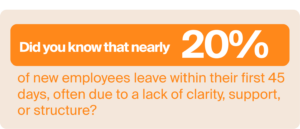

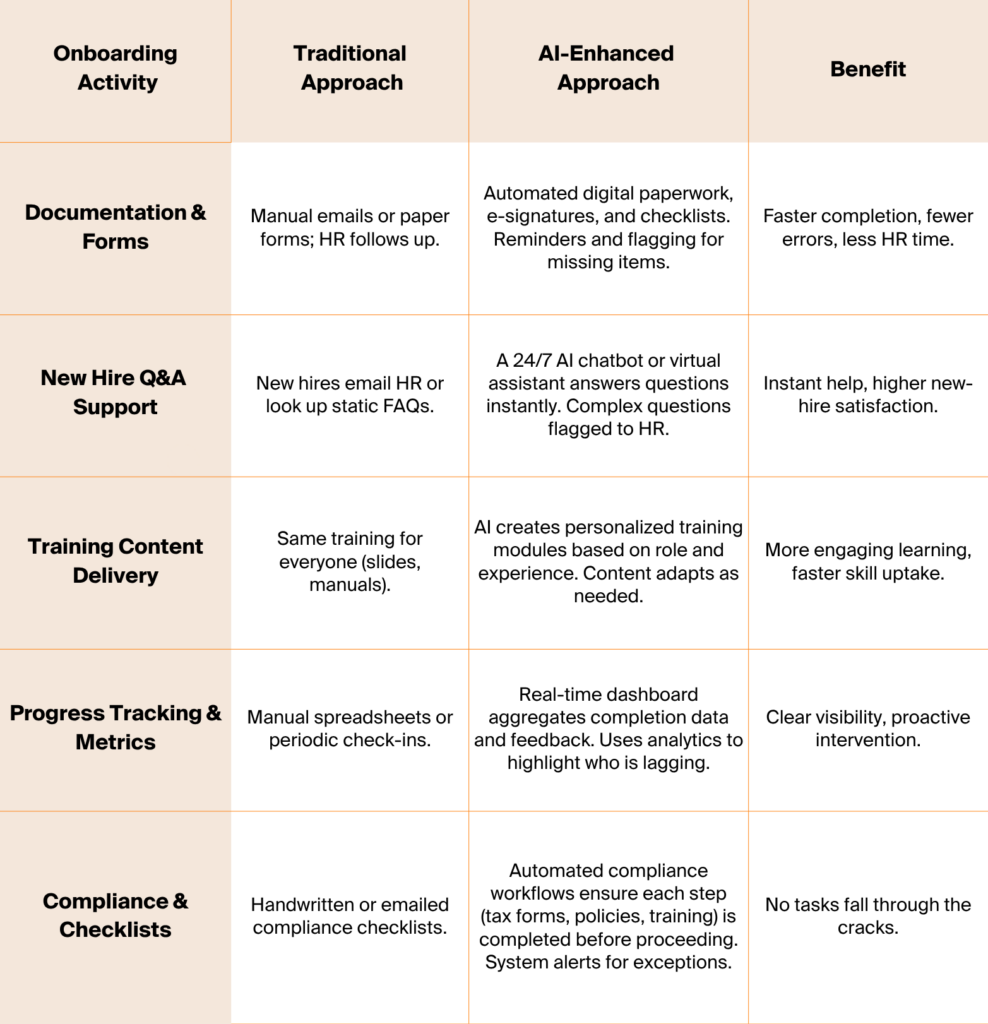

 KnowledgeCity
KnowledgeCity 